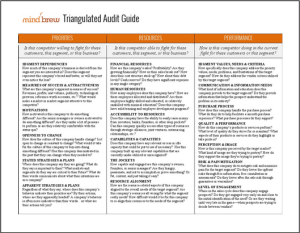If you are old enough to remember the 1980s (and some of us here at PricingBrew definitely are), you might remember a time when cockroaches were pretty much everywhere — and no one could get rid of them.
Now, some of you probably still see the occasional roach (especially if you live in the South or a big city), but today’s infestations are nothing like they once were. In the 1980s, scientists estimated there were 2 billion cockroaches in New York City alone. Everyone in the city had seen roaches — and lots of them. Today, by contrast, there are less than 2 million sightings per year.
For those doing the math, that means there are about 1,000 times fewer cockroaches around now than there once were.
How did that happen?
Simple: the Combat roach trap.
After years of trying — and failing — to find something to kill roaches, a company invented a slow-acting poison that they could put in cockroach bait. The cockroach would eat the bait and go back to their nests and to slowly die. And because cockroaches are cannibals and also eat each other’s poop and vomit (yeah, we know, gross!), the poison would transfer to other roaches until it wiped out the whole colony.
We’re bringing this up because the pricing profession also has an infestation.
We’re not talking about literal pests. Instead, the pricing roaches are insidious (and in our opinion, somewhat disgusting) habits that can infect teams. They’re really hard to get rid of. They eat away at margins, and they can make the organization unhealthy.
Pricing’s roaches
- Margin Leakage: Does your organization lose out on potential revenue through rampant discounting, bids falling out of alignment, or salespeople who negotiate badly? Like cockroaches that find food in unsealed containers, margin leaks exploit gaps in pricing discipline and control. Find out how to eliminate those gaps in Closing Costly Margin Leaks.
- Balancing Pricing Across Channels: Each channel usually has its own pricing dynamics, market demands, and customer expectations. If you try to price them all the same way, you’re creating a breeding ground for pricing conflicts and margin erosion. Managing Multichannel Pricing explains how to stop the spread.
- Outdated Pricing Models: Relying on pricing models that do not reflect current market dynamics or customer value perception is like continuing to stick with old pest control methods when far more effective ones have appeared on the market. Get up to date by Making Pricing More Responsive.
- Poor Response to Competitive Pricing: Failure to monitor and respond to competitors’ pricing strategies can leave a company vulnerable. It’s a little like ignoring the signs of a pest invasion until it is too late. Learn how to handle competition the right way in How to Combat Competitive Pricing Pressure
- Segmentation Failures: Not accurately segmenting customers and tailoring prices can lead to missed opportunities and customer dissatisfaction. It’s similar to using a one-size-fits-all approach to pest control — and rat traps catch only the really big cockroaches. Getting the Most Out of Price Segmentation explains how to modify your approach for each customer, and increase margins as a result.
We hope that all the talk about roaches didn’t gross you out too much. But we also hope that it hammers home the point that you really need to get these habits under control before they proliferate and infect your organization.


















